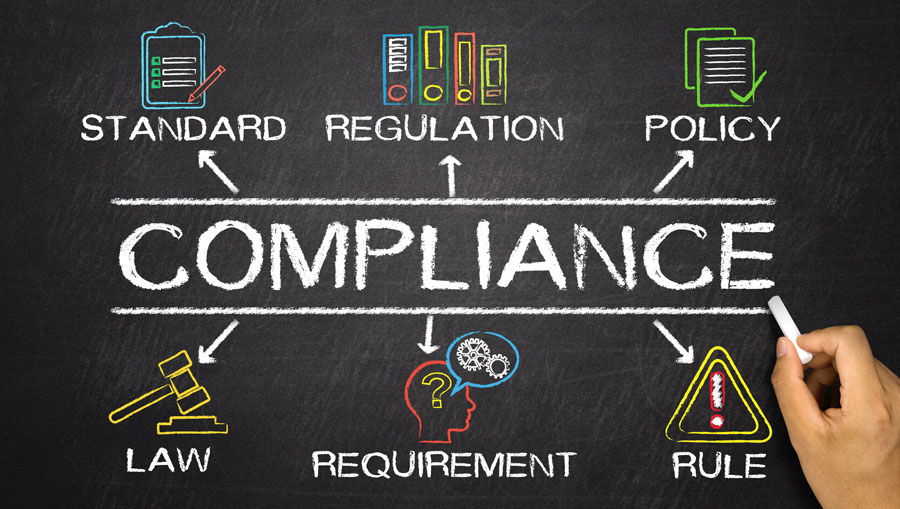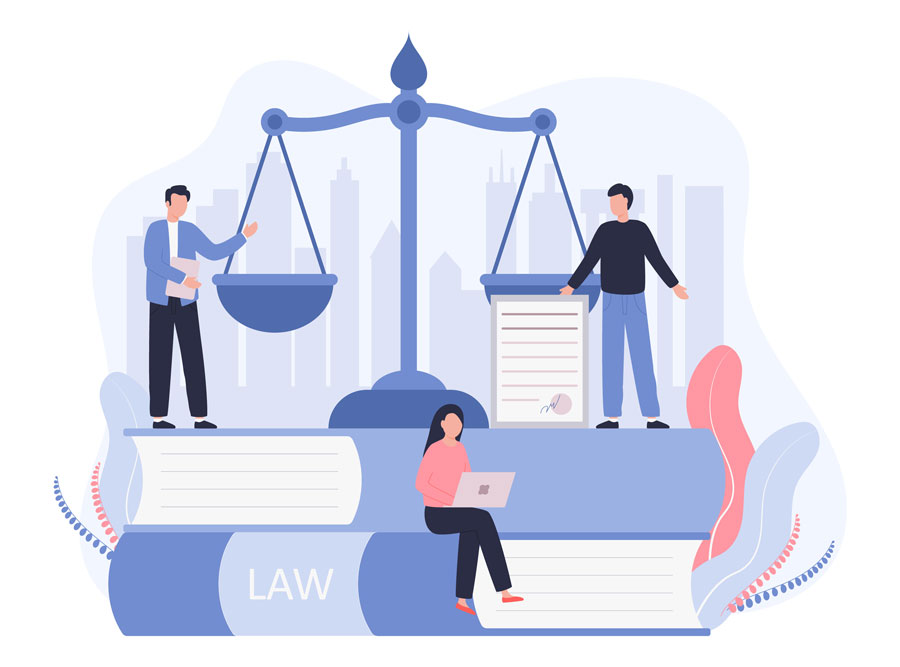 In the fast-evolving landscape of labor laws, understanding California meal and rest break regulations is crucial for anyone working in or managing a business in California.
In the fast-evolving landscape of labor laws, understanding California meal and rest break regulations is crucial for anyone working in or managing a business in California.
With the state being famous for its stringent labor protections, these laws are designed to ensure that employees receive essential breaks during their workday. They not only promote worker well-being but also help to minimize legal disputes and enhance workplace efficiency.
For 2025, California rest and meal break laws remain a vital topic for employers and employees alike, with specific guidelines dictating when breaks should occur, how long they should last, and the conditions under which they can be waived. Knowing these requirements can help prevent costly penalties and misunderstandings.
Distinctions between exempt and non-exempt employees influence the application of these regulations, emphasizing the need for clear differentiation and understanding of their roles within a company.
This article delves into the intricacies of California’s rest and meal break laws for 2025, offering an overview of the requirements, potential penalties for non-compliance, and strategies for maintaining proper adherence.
By exploring legal considerations, the role of the California Labor Board, and employers’ and employees’ responsibilities, readers will gain a comprehensive understanding of how these laws function and their significance in ensuring fair treatment of workers across the state.
Table of Contents
ToggleOverview of California Meal and Rest Break Laws
California has specific laws governing meal and rest breaks to protect employee rights. Workers must receive a minimum 30-minute meal period if they work over five hours in a day. During this time, employees can step away and handle personal tasks if they wish.
The rules state that these meal breaks cannot overlap with rest periods. Employers should make sure that meal periods are free from work interruptions. Failure to provide adequate breaks may lead to penalties. Employees can report any violations to the California Labor Commissioner’s Office to resolve issues.
Definition of Meal Breaks
Under California law, if employees work more than five hours, they are entitled to a 30-minute meal break. These breaks should be free from all work duties, allowing employees to rest or do personal activities.

Employers must offer meal periods, but are not required to enforce their usage.
These breaks should not merge with rest periods and should be taken separately. It’s essential for workers to understand that they can use this time as they like, keeping in mind it aligns with company rules.
Definition of Rest Breaks
California’s rest break laws require employers to give employees a paid 10-minute rest for every four-hour work period.
These breaks are granted if the employee works at least 3.5 hours a day. Usually, the break is best taken in the middle of the four-hour period, but timing can be flexible when necessary.
These breaks are considered work time, meaning employees get paid during the break without any deductions.
If employees work less than 3.5 hours, they typically do not receive rest breaks unless they work in some specialized sectors. Such provisions ensure that employees are relieved from work duties to recharge effectively.
Meal Break Requirements
Understanding meal break laws requirements is important for both employers and employees in California. Under state labor laws, employees working more than five hours must receive a 30-minute unpaid, duty-free meal break.
When the shift extends beyond ten hours, employees are entitled to a second meal break of the same duration. It’s important to note that these meal breaks must free the employee from all work duties.
Non-compliance from employers can lead to penalties, requiring them to pay a meal break premium. This ensures that employees have the time needed to rest and refuel, thereby enhancing their productivity and well-being.
Timing of Meal Breaks
The timing of meal breaks is a critical aspect of California’s labor laws. For shifts longer than five hours, the 30-minute meal break must start before the end of the fifth hour. If an employee’s shift exceeds ten hours, a second meal break is required before the tenth hour is complete.
This requirement emphasizes diligence in providing timely breaks to avoid any penalties. Importantly, employers must not discourage or motivate employees to skip these breaks.
Violations can result in the employer paying an additional hour of wages to the employee. Thus, adhering to these timeframes protects both employers and employees.
Duration of Meal Breaks
Meal breaks under California law are designed to be uninterrupted periods for rest. Employees who work more than five hours must receive at least a 30-minute break.
This period must allow employees to be completely free from work-related duties. Those working shifts beyond ten hours should receive an additional 30-minute break.
Mutual consent between the employer and the employee can allow for meal break waivers under certain conditions. This ensures that while meal breaks can be flexible, employees’ right to rest is still a top priority.
Conditions for Waiving Meal Breaks
While meal breaks are generally mandatory, there are circumstances under which they can be waived. If a shift does not exceed six hours, employees and employers can mutually agree to skip the first meal break.
For shifts longer than ten hours, a second break can be waived if the total work period remains under twelve hours, and the first break was not waived.
The key here is voluntary agreement; employers cannot coerce employees into giving up their rights. Both parties need to agree, and waivers must be obtained in writing whenever possible.
This protects the employee’s right to choose rest while allowing flexibility in scheduling.
Rest Break Requirements
California law is clear about rest break requirements for non-exempt employees. Workers are entitled to a 10-minute paid rest break for every four hours worked or a significant portion thereof. During these breaks, employees must be free from all work duties.
Employers must provide a suitable rest area away from workspaces and restrooms. These breaks are paid and count as working time, ensuring employees aren’t shortchanged. If an employer fails to provide a rest break, they must pay an extra hour at the employee’s regular rate.
However, employees working less than three and a half hours are not entitled to rest breaks under California law.

Timing of Rest Breaks
The timing of rest breaks is important and should ideally occur near the middle of each four-hour work period. Some flexibility is allowed to accommodate practical work considerations. The law encourages aligning breaks with the midpoint of work periods to meet legal requirements.
This means that if a shift is longer than four hours, breaks should be scheduled to fit logically within the workday.
Although adjustments can be made, ensuring breaks are neither too early nor too late helps maintain productivity and satisfaction. Employers must schedule these breaks reasonably, keeping the employee’s needs in mind.
Duration of Rest Breaks
In California, the duration of rest breaks is clearly defined. Employees must receive a 10-minute paid rest break for every four hours worked. This 10-minute break must be taken near the middle of the work period whenever possible. The break time is paid and considered part of the work hours for wage calculations.
For workdays exceeding the four-hour mark, employees are entitled to additional rest periods. Employers must supply appropriate resting facilities that are clearly separate from the work environment.
These provisions ensure employees can rest comfortably. By adhering to these rules, employers support both the well-being and efficiency of their workforce.
Penalties for Non-Compliance
In California, employers must provide meal and rest breaks to non-exempt employees as mandated by labor laws. Failing to do so can lead to penalties, impacting both the company’s finances and its reputation.
Employers who violate these rules could pay one additional hour of pay at the employee’s regular rate for each workday the violation occurs. This penalty is retroactive, going back up to four years.
Non-compliance not only results in immediate financial costs but also risks harming a company’s reputation, which can make it harder to attract and keep quality workers. Businesses violating these laws might face increased employee turnover and damage to their professional relationships in the long run.
Penalties for Missed Meal Breaks
California law requires employers to pay a meal break premium if a break is missed or inadequate. This premium is an extra hour of pay at the regular rate for each day a meal break is not provided.
Employees must receive a 30-minute meal break for every five hours worked. If shifts are longer than 10 hours, a second 30-minute break is mandatory. If this is not given, the employer owes another meal break premium.
On-duty meal breaks are allowed only with a written agreement and are not eligible for the extra hour of pay.
Employees can report violations to the California Labor Commissioner’s Office or take legal action.
Penalties for Missed Rest Breaks
Under California law, each missed rest break requires the employer to pay one additional hour at the employee’s regular rate. This applies per workday that rest breaks are denied. Missed rest breaks can lead to small fines initially but can grow into large sums, especially if violations repeat over time.
Employees can join together in class-action lawsuits, which can result in high legal costs for the company.
Denying rest breaks is considered illegal wage theft. This practice costs California workers around $2 billion each year. Thus, it’s crucial for employers to adhere to rest break laws to avoid legal and financial repercussions.
Exempt vs. Non-Exempt Employees
Understanding the difference between exempt and non-exempt employees is crucial under California labor laws. Non-exempt employees are covered by meal and rest break requirements, which ensure they get regular breaks during shifts.
Exempt employees are typically not eligible for these breaks due to the nature of their work. They usually perform tasks that involve decision-making responsibilities and earn a salary that is at least twice the state minimum wage for full-time employment.
Various industries, like commercial trucking and healthcare, may have specific rules that impact these classifications. It’s also important to note that independent contractors and unionized workers under collective bargaining agreements generally fall outside these regulations.
Definitions and Differences
In California, the distinction between non-exempt and exempt employees significantly impacts their work conditions. Non-exempt employees are entitled to meal and rest breaks, which must be adhered to by employers. But, for shifts under six hours, these employees can choose to waive their meal break.
This waiver cannot be imposed if the shift exceeds six hours. Also, there are penalties for employers who fail to provide mandated breaks, including one hour of extra pay at the employee’s regular salaried or hourly rate.
California’s labor laws ensure these breaks are taken separately, maintaining clear boundaries between meal and rest periods. For exempt employees, this structure differs as they perform roles needing higher decision-making and earn salaries above a set threshold.
Meal and Rest Break Regulations for Exempt Employees
Exempt employees in California typically occupy roles requiring administrative, executive, or professional skills. These roles demand discretion and independent judgment, differentiating them from non-exempt roles.
To qualify as exempt, employees must earn at least twice the minimum wage for full-time work. Although exempt employees generally do not have guaranteed rest breaks, they are often entitled to meal breaks.
However, industries like healthcare and the motion picture industry include specific exemptions affecting these rules. Employers can only classify employees as exempt if they meet the necessary criteria. This helps avoid misuse and ensures the fair treatment of workers not covered by standard break requirements.
Regulations for Non-Exempt Employees
Non-exempt employees in California have specific rights regarding meal and rest breaks. If they work more than five hours in a day, employers must provide a 30-minute unpaid lunch break. Those working over 12 hours must receive a second 30-minute meal break.
The law also mandates a ten-minute rest break for every four hours worked. Importantly, these meal breaks should be uninterrupted, with employees fully relieved of their duties. Failure to comply with these break requirements results in a penalty, where employees deserve an additional hour of pay.
Employers must abide by these regulations, ensuring that non-exempt employees receive their entitled breaks without interference.
Duty Meal Periods
“Duty meal periods,” also known as on-duty meal periods, is a concept that arises when the nature of an employee’s work prevents them from being completely relieved of duties for a meal break. In this scenario, the employee eats while still performing their job duties. Under California law, these on-duty meal breaks are allowed only under very specific conditions and must be agreed upon in writing by both the employer and employee.
For a duty meal period to be legitimate:
- Nature of Work Necessitates It: The duties must inherently require the employee to be on duty while eating. This might apply to certain security personnel or some solo retail workers.
- Written Agreement: The employee must consent, and this agreement must be documented in writing as a clear, mutual decision. The agreement also must recognize that the employee can revoke consent to this arrangement at any time.
- Paid Break: Since the employee is technically still working, the duty meal period must be paid. This is unlike the standard meal break, which is unpaid if truly off-duty.
Employers must approach the arrangement of duty meal periods with caution. This is not intended for the employer’s convenience but rather a necessity based on the employee’s role and specific job requirements. Employers should ensure that the conditions for duty meal periods are transparently communicated and comprehensively documented.
Moreover, it’s crucial for businesses to regularly review these agreements to ensure ongoing compliance with California labor laws and adapt to any changes that may occur in either the employee’s duties or legislation. By actively managing these agreements, employers protect themselves from potential legal disputes while safeguarding employee rights.
Managing Compliance
Employers in California face strict regulations regarding meal and rest breaks. The law requires non-exempt employees to have a 30-minute, duty-free meal break for every five hours worked.
Additionally, workers earn two 10-minute rest breaks for an eight-hour shift. These breaks must be uninterrupted and free from any work-related duties. Employers cannot make employees stay on-site or be on-call during these times.
Compliance ensures employee well-being and can prevent legal penalties. Ensuring clear, scheduled breaks reduces health risks and boosts productivity.

Common Compliance Challenges
Navigating the intricacies of California’s labor laws can pose significant challenges. Employers commonly struggle with ensuring meal breaks happen before the end of the fifth hour.
Honest mistakes in scheduling can lead to lawsuits under laws like the Private Attorneys General Act (PAGA). PAGA allows employees to sue for wage theft, which has a hefty cost—California workers lose around $2 billion annually.
Missteps in meal and rest break compliance can have serious financial repercussions for employers due to legal actions and penalties.
Strategies for Employers
Employers can adopt several strategies to adhere to meal and rest break laws in California. First, they should schedule 30-minute breaks by the fifth hour of work and ensure two 10-minute rest breaks within eight-hour shifts. Failure to comply may result in compensating employees with an extra hour of pay.
Employers should consult legal advice to stay ahead of labor law changes. It helps to understand cases like Naranjo, impacting break premiums’ classification as wages. Staying informed minimizes risks of costly legal disputes.
Evaluating and Documenting Break Times
Precise tracking of break times is vital for legal compliance. Employers should use timekeeping apps to log the start and end of each break accurately. Employees need to complete Daily Sign-Off forms, confirming they took their breaks.
This documentation helps clarify any disputes that arise. Employers should maintain records of any missed breaks, noting if employees were encouraged to skip them.
Proper documentation can protect businesses from penalties incurred for unrecorded or mishandled meal and rest breaks.
Importance of Accurate Record-Keeping
Accurate record-keeping is essential for employers to comply with California’s break laws. Tracking break usage and maintaining records helps employers demonstrate compliance. Proper documentation also aids in defending against employee claims of violations.
Misunderstanding these laws can lead to costly legal challenges. If employers do not provide records of compliant breaks, they risk enforcement actions, including penalties from the Division of Labor Standards Enforcement. Thorough records are crucial to showing due diligence in offering required breaks.
Legal Considerations
Understanding meal and rest break laws in California is crucial for employers and employees. These laws ensure employees are not overwhelmed by work demands, promoting safety and productivity.
Under California law, employers must compensate employees for rest periods, as these are considered work hours. The regulations aim to protect non-exempt employees, ensuring they receive proper breaks and compensation. Employers must comply with these requirements to avoid legal repercussions, such as fines or wage claims.

Consulting legal counsel can aid in understanding industry-specific rules and preventing potential compliance issues.
Possibility of Waivers
In some situations, California law allows employees and employers to agree on waiving meal breaks. If an employee’s shift is six hours or less, they can agree not to take a meal break.
When a shift is 12 hours or less, a second meal break can be waived, provided the first meal break was taken. It is vital that both parties agree voluntarily without any pressure from the employer.
Although written waivers are not always necessary, having them can prevent misunderstandings. Employees also have the option to withdraw their agreement at any time, ensuring their rights are protected.
Impact of New Legislation
At this time, there are no new specific laws affecting California meal and rest breaks for 2025. However, it’s always wise to stay informed about potential legislative changes that could impact these regulations.
Changes can come swiftly, affecting how meal and rest breaks are scheduled and documented. For the most accurate information, check for updates from official sources like the California Labor Board or seek legal advice to ensure compliance with any new laws that might arise.
Role of the California Labor Board
The California Labor Board, officially known as the Division of Labor Standards Enforcement (DLSE), plays a key role in enforcing meal and rest break laws. If an employer does not provide the necessary breaks, they must pay a premium wage of one extra hour of pay. Employees who miss their breaks can file claims with the Labor Board.
They can seek unpaid premium wages for missed breaks dating back up to three years. Keeping personal records of missed breaks is advised to support claims. The Labor Board stands as a protector of workers’ rights, ensuring that meal and rest break laws are respected by all employers.
Ensuring Fair Treatment of Workers
In California, the law safeguards workers by ensuring they receive fair treatment regarding meal and rest periods. This means, among other things, that employees who work for more than five hours are entitled to a meal break. These meal breaks are vital as they allow workers time to rest, recharge, and return to their duties more productively.
Employers must adhere strictly to these regulations to maintain a harmonious workplace while avoiding potential legal consequences. Compliance with meal and rest break laws is not merely a suggestion but a mandate that carries weighty implications if neglected.
Employer Responsibilities
Under California labor laws, employers have distinct responsibilities to their non-exempt employees concerning meal and rest breaks. One important aspect is providing an unpaid 30-minute meal break for every five hours of work, to begin before the end of the fifth hour.
Should an employer fail to provide these breaks, they are obligated to compensate the employee with an extra hour of pay at their regular rate for each violation.
Employers must also ensure that employees are relieved of all duties during these breaks. It is illegal for employers to discourage the use of breaks, offer incentives to skip them, or create a culture that pressures employees into foregoing their breaks.
Although employers must offer these opportunities, they are not required to ensure that employees actually take them, placing some responsibility on the worker’s discretion.
If the employee is salaried or is at an hourly rate, this makes no difference.
Employee Rights
California labor laws protect employees by entitling them to uninterrupted meal breaks if their work exceeds five hours. These breaks should occur before the end of the fifth hour, and any attempts to deny or discourage taking these breaks can lead to legal repercussions for the employer.
If an employee is not granted their entitled meal or rest break, the law mandates that the employer must provide an additional hour of pay at the regular pay rate for each occurrence.

Keep in mind, there is room for flexibility; meal breaks can be waived if both employer and employee mutually consent, particularly when the total work period is six hours or less. It is illegal to pressurize workers into skipping their breaks, reinforcing their right to make that decision independently.
Have you not been receiving your meal ore rest breaks as a California employee? We can help. You can find our California meal and rest break calculator here, and if you have any questions about any other unpaid wages or employment issues, give us a call at 1-888-924-3435 or fill out the form.
References:
https://leginfo.legislature.ca.gov/faces/codes_displaySection.xhtml?lawCode=LAB§ionNum=512.


